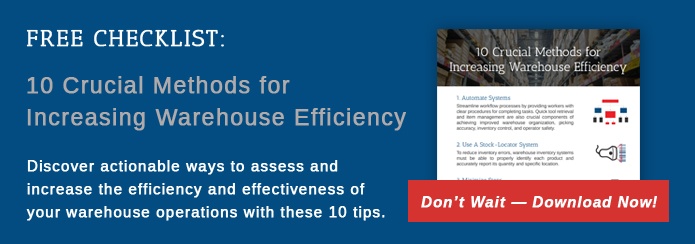 Are the old, proven methods for managing a warehouse really the best? Or can warehouse management software do it better? This is a conundrum facing many warehouse operations these days. Investing in warehouse management systems may seem like a big expense, but it can be an important investment for your warehouse operation.
Are the old, proven methods for managing a warehouse really the best? Or can warehouse management software do it better? This is a conundrum facing many warehouse operations these days. Investing in warehouse management systems may seem like a big expense, but it can be an important investment for your warehouse operation.
Let's look at some of the many functions you find in a warehouse management system and the benefits it brings.
Receiving Goods
What happens when a shipment arrives at your warehouse receiving dock? You likely have to match the shipment to an outstanding order, then take a count to see if it is a complete or partial shipment. If you are doing this function manually, you probably have a pile of outstanding orders to sort through first. Then you count everything, ticking off what you find. Then you have to update the inventory counts before putting away the stock.
With a WMS, this is more straightforward. You have the expected orders already flagged. You can easily find the outstanding order. As you make the count, you can update the inventory directly with a handheld unit.
Tracking Inventory
Do you know how much of each product you have in your warehouse? If you don't have real-time inventory tracking in your warehouse management software, then you can't be sure of anything you have in the warehouse. An order comes in, and you hope you have enough product to cover it.
With a modern WMS and cycle counts, you can have real-time inventory. Every product that comes in is tracked. Every item being picked is tracked. Every product that leaves the warehouse is tracked. When an order comes in, you will know if you can cover it or not.
Slotting
If you had to find a slot for a new product in your warehouse, how would you do it? You might have to scan your shelves to find an open slot, and then put the product in there. You might note the slot in the inventory system, but then again, you might not, because it could change tomorrow when more products come in.
Every product in your WMS will have an assigned slot. The product is put there when it arrives and every time a new shipment arrives; there is no question where it goes.
Picking
Picking an order the old-fashioned way is straightforward. You print out a pick ticket and send a worker to get the products. The worker is running all over the floor picking each product. Some of the items on the list may be in the wrong spot or out of stock. This takes extra time and can leave half-finished orders all over the shipping dock. Plus, you have to update the inventory after the pick is over.
A warehouse management system makes picking an order much simpler. The system assigns picks as it is programmed, whether you want it done in single waves or multiple passes. As the worker does the pick, it is counted and tracked automatically, updating the inventory as it goes.
Customer Service
Your customers, whether internal or external, depend on your operation to deliver products accurately and quickly. Doing everything by hand can slow the order processing down significantly. Lack of inventory visibility can leave customers short on product.
A WMS makes it possible to increase order accuracy and improve turnaround times.
If you are on the fence about bringing in updated warehouse management software, think about the benefits it will bring to your operation. What is holding you back?



